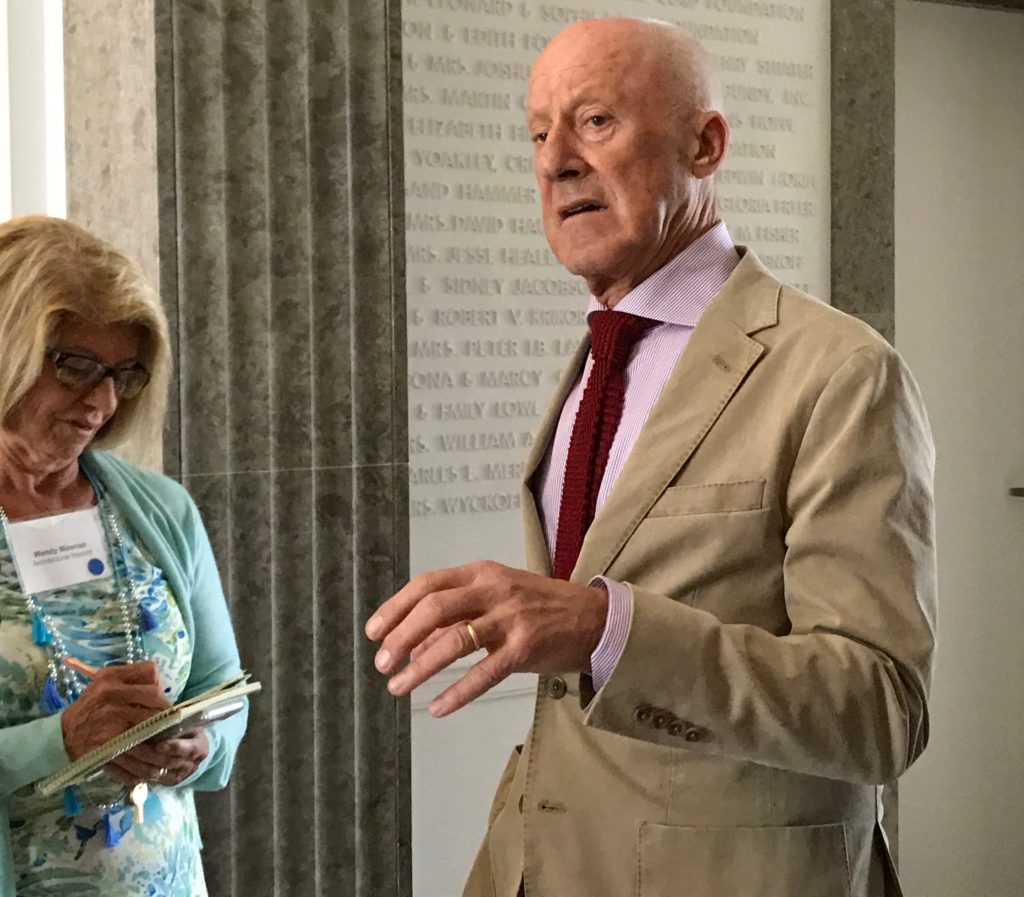Art Industry News is a daily digest of the most consequential developments coming out of the art world and art market. Here’s what you need to know on this Tuesday, September 7.
NEED-TO-READ
Big Ben Is Blue Again – Restorers working on the Elizabeth Tower, which holds Big Ben in London, have removed black paint used to cover up pollution in the 1930s and restored the clock’s hands to their original shade of Prussian Blue. Scaffolding is now coming down as experts wrap up work on the clock tower’s £80 million ($110.25 million) makeover. (Evening Standard)
Why Are Tech Investors Flocking to Art Startups? – The art industry has historically been considered too small, too analogue, and too specialist to attract considerable investment from the tech community. But several companies, including MakersPlace, LiveArt, and Limna, have attracted significant outside investment in recent months. Melanie Gerlis suspects the influx of cash has more to do with the current volume of startup funding than the allure of the art business in particular. She describes it as “a case of throwing money in several directions to see what sticks.” (The Art Newspaper)
Norman Foster Defends Air Travel – Norman Foster, the British architect famous for building airports, minimized the aviation industry’s impact on climate change in an interview with Bloomberg. “I would argue that everything has a footprint, and in relative terms, the carbon footprint of air travel is relatively small,” he said. (Bloomberg, Designboom)
The British Museum’s Former Director on the Statue Debate – Neil MacGregor, the former director of the British Museum and founding director of the Humboldt Forum in Berlin, wades into the statue debate in a new op-ed. He argues that destruction of public monuments—especially those that represent our most shameful histories—is, in some ways, the easy way out. Praising Germany’s approach as a model, he writes, “A key way to encourage remembering is to keep the mistake visible—radically relabelling or repurposing monuments rather than destroying them.” (TAN)
MOVERS & SHAKERS
Adam Sheffer Is Heading to Lisson – Pace’s former vice president (and, before that, a longtime director at Cheim & Read) has joined Lisson Gallery as senior director. He will work alongside executive director Alex Logsdail in New York. (Vanity Fair)
Paris Internationale Will Go Ahead – Despite some smaller fairs calling off their 2021 in-person events, Paris Internationale will forge ahead with its seventh edition, which runs October 20–24 at 186 Avenue Victor Hugo. Nearly 45 galleries have announced their participation in the fair focused on emerging artists and rediscoveries. (Press release)
Art Basel Plans “Live” Program – In order to extend its presence for those who cannot attend the physical fair, the company is holding “Art Basel Live,” its digital supplement, concurrently from September 21–26. VIPs will have access to virtual on-site and OVR walk-throughs beginning Tuesday, September 21 at 11 a.m. CET. (Press release)
FOR ART’S SAKE
The São Paulo Biennial Makes a Statement in Politically Fraught Brazil – The St Luisa meteorite, one of the few items that made it through a devastating fire at the National Museum in Brazil in 2018, is on view at the São Paulo Biennial, which opened over the weekend. Half a dozen collages and sculptural assemblages by Lee “Scratch” Perry, the pioneering dub artist who died just before the show’s opening, are also on view in an exhibition that takes a brave stand in Jair Bolsonaro’s Brazil. (Guardian)
Nick Cave Takes Over the NYC Subway – The artist is known for creating elaborate Soundsuits that move and transform as performers dance inside them. His latest project, installed in the corridor connecting Times Square and Grand Central Station in midtown Manhattan, translates these forms into mosaic. Every One the first installment of a three-part installation; the rest will be unveiled next year. (New York Times)






